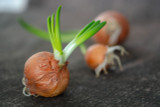How To Start A Vegetable Garden In 3 Steps
Gardening at home can help you save money and get closer to the natural world. For instance, a single tomato plant may be purchased for as little as $3 to $5 and produce up to 10 pounds of tomatoes over the growing season. This can easily save you $20 or more compared to buying a lot of fresh produce. You may even reduce your costs by growing your favorite herbs and vegetables from seeds. Also, you'll discover that garden-grown food has an even greater flavor and texture than what you're used to buying at the supermarket. Consider using these three helpful steps to kickstart your vegetable garden!
Begin in a Small Area
Start small if you're just getting started gardening. It's better to be pleased with the results of a small garden than to find a large one time-consuming or difficult to manage. It's also advisable to have a basic understanding of gardening before devoting a lot of time and money to this new hobby! You'll have a better idea of how long gardening takes, and the ins and outs of gardening.
A beginner's vegetable garden should be about 6x6 feet in size. Choose up to five different vegetable varieties to grow, then plant a few of each type.
With a smaller garden, you'll have no trouble keeping up with chores, and you'll have enough fresh vegetables for your summertime dinners. Another excellent approach to start is to grow vegetables in pots or containers. You don't even need a yard with them; a sunny deck or balcony would do.
Sow Seeds in Rich Soil
Your vegetable garden requires the best soil you can find to grow the best produce. You can tell when the soil is rich and healthy when it is easy to dig in and drains well. Take a trowel's worth of material and hold it in your hands. How gritty does it feel? The sand quantity could be too high. Does it have a powdery feel? There could be too much silt. Is it sticky when wet? There's likely more clay in it than is ideal.
You want dirt that is essentially full of life, gritty, and a deep color. Thankfully, any soil may be improved over time by adding organic matter to it, regardless of its original texture. Consider sandy soils, for example. Large soil particles make up its structure, making gaps relatively easy for water and nutrients to pass through. In sandy soil, adding organic matter—typically compost—fills in the crevices between sand particles to help plants retain moisture and nutrients.
The pH and nutritional levels of the soil where you intend to produce food also matter, so it'll be wise to test and adjust it accordingly to obtain the finest harvest.
Produce Food You Like Eating
What do you enjoy eating? You'll learn from your dietary preferences just what to grow in your food garden. Perhaps you have a taste for tomatoes and radishes, or prefer their heirloom varieties.
Whichever you choose, you can gather vegetables and herbs all through the spring, summer, and fall if you plant both warm- and cool-weather plants. Grow lettuce, greens (like arugula), peas, radishes, carrots, and broccoli in the early spring. Plant hot-weather favorites like tomatoes, peppers, eggplant, and herbs after harvesting your cool-weather crops. Kale, cabbage, and potatoes can all be harvested in the fall.
With these tips in mind, you’ll be well on your way to starting the home vegetable garden of your dreams!
Recent Posts
-
The Secrets To Growing Radishes In Containers
Container gardening is a popular way to grow vegetables like radishes. Growing radishes in container …26th Jun 2023 -
How To Successfully Grow Onions From Seeds
Many recipes use onions to give a strong taste and smell. Growing onions from seeds is better than b …26th Jun 2023 -
How To Grow Radishes At Home: A Step-By-Step Guide
Growing your radishes at home can be a rewarding and delicious endeavor. These crispy and spicy vegg …26th Jun 2023





